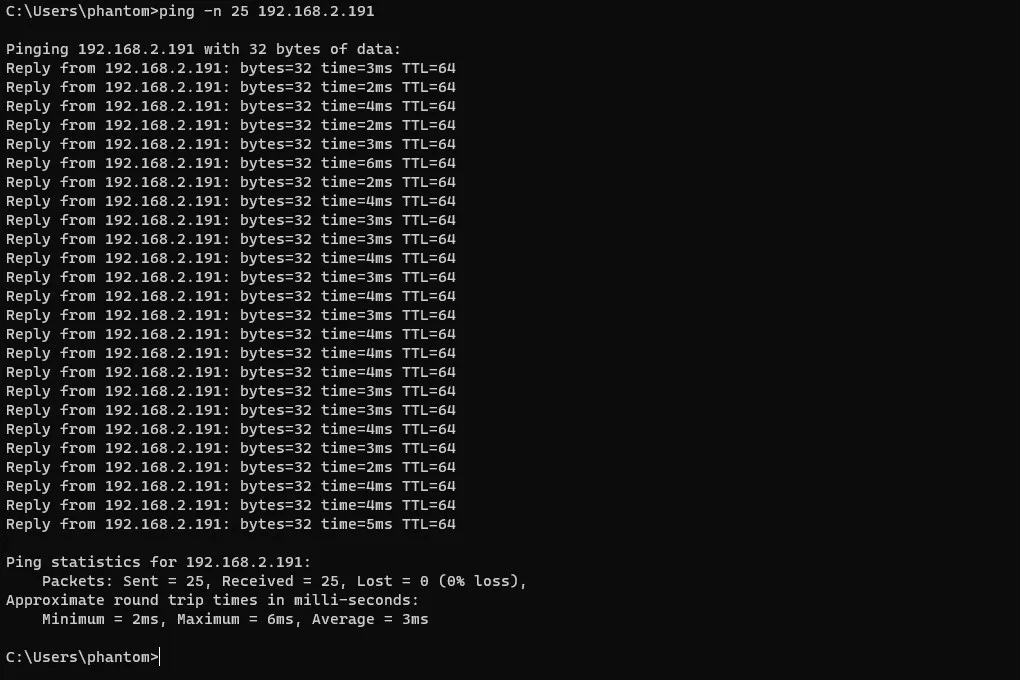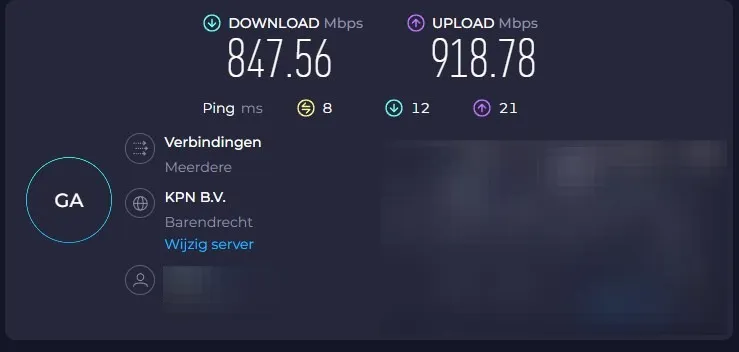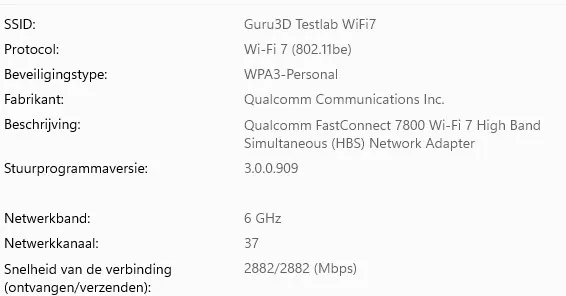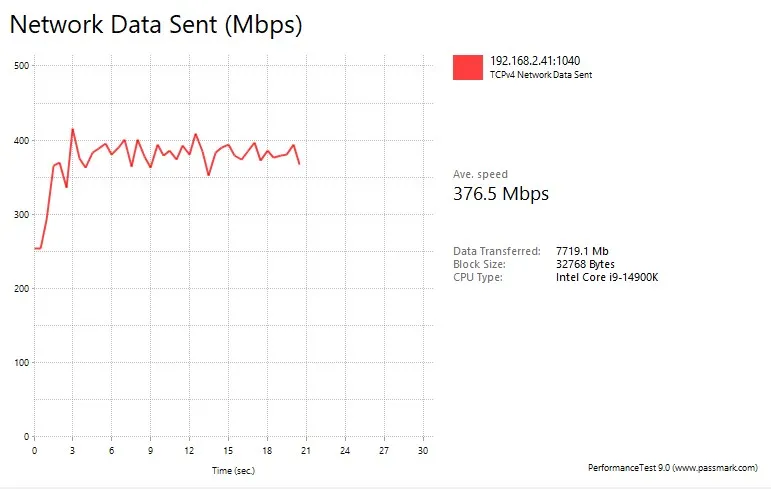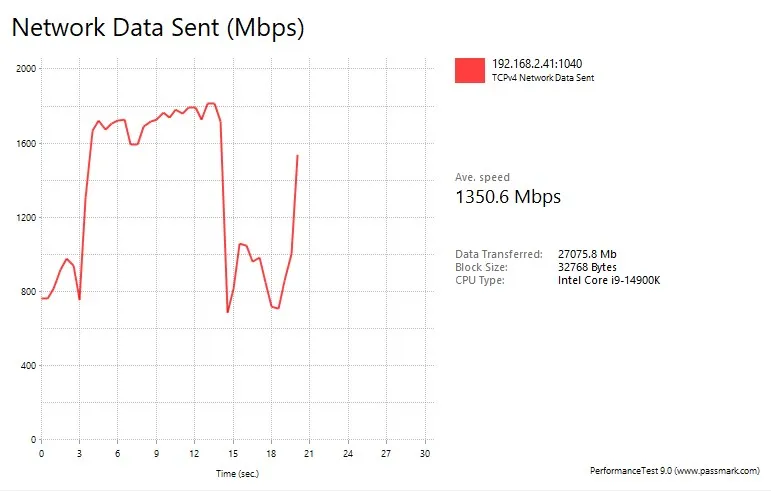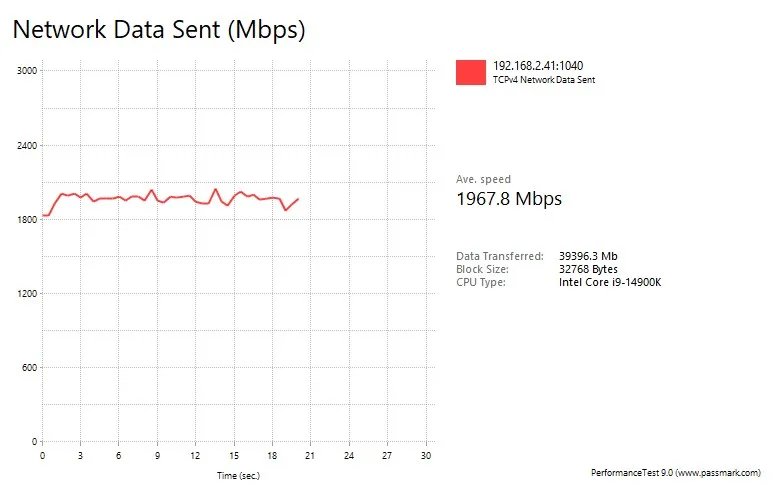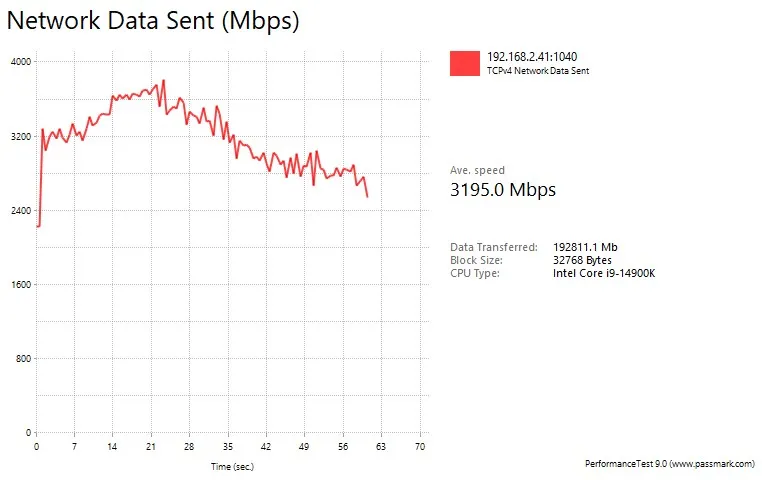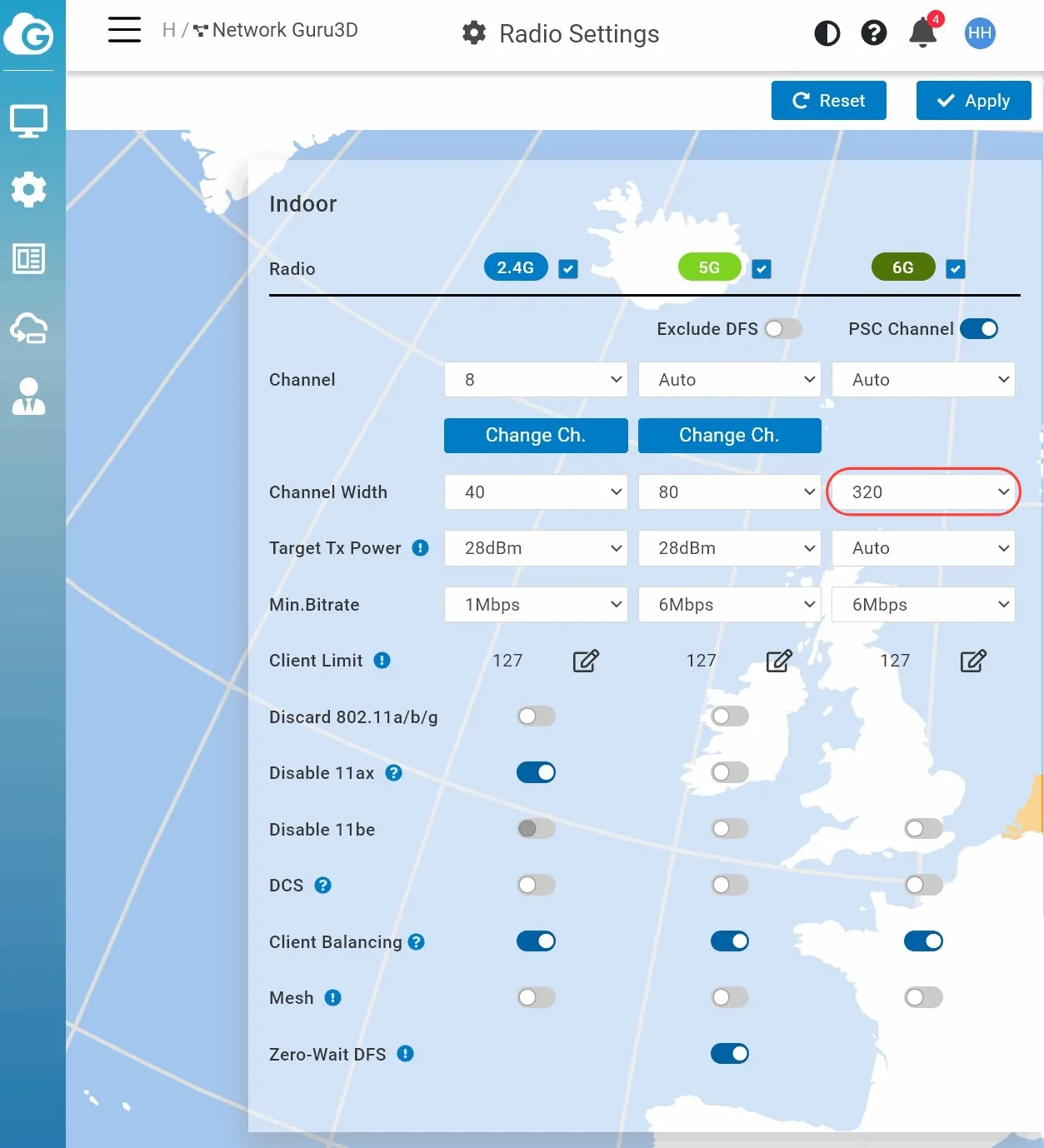2 meter Performance Wireless WIFI7 802.11be
For our performance tests, we simulated a multi-level concrete house with a ground floor and a first floor. The router (host) was placed on the ground floor, and we tested with a client in multiple locations. Before we begin throughput testing let's look at a few standard variables. I love a good ping results, so here we go:
We're measuring at 7 meters here, through walls, no packet-loss and an average of 3ms is rather sexy. But let's test out our WAN internet connection (1 Gbps fibre) first.
That's a good start. Our fibre connection never pulls the full 1 Gbit/s but this is close enough. We're measuring at 7 meters here, through walls and a door.
Performance Wireless WIFI7 - 2 meters
Enthusiast class motherboards these days often come with advanced built-in Wi-Fi, and there are many standards to choose from. Wireless AC is where it really starts these days, also known as 802.11ac and 802.11ad. These motherboards are tested here at Guru3D.com to evaluate their performance. Wireless AC draft 802.11ac/802.11ax/802.11be technology is designed to optimize video streaming experiences by providing Gigabit Wi-Fi speeds. This allows for faster content downloads and faster synchronization of large video or music files. With the growing number of Wi-Fi devices in the home, this new wireless standard helps to deliver better wireless speeds.
Our source router supports 802.11a, 802.11ac, 802.11b, 802.11g, 802.11n, 802.11ax,802.11be. The router is located in our office for this specific test. We measured throughput several times per second during a 30-second test run in a host/client setup. The results above show true sustained throughput. For example, if you have your router on the ground floor and want to watch Netflix in Ultra HD in the attic where you have built your home theater setup or gaming crib, the signal would require at least about 25 Mbps. Netflix Ultra HD uses a little over 15 Mbps, but you need a little reserve for caching and error correction. So 25 Mbps at the worst location would be the absolute minimum to achieve. It would also be an acceptable figure for web browsing. However, results will vary depending on your location and environment. Many variables can affect WIFI performance, such as the number of WIFI routers in your neighbourhood, appliances like refrigerators turning on and off, and gear like microwaves. This makes WIFI a rather subjective and difficult thing to test.
We make use of a Z790 WIFI enabled motherboard with Qualcomm 7800 Wi-Fi 7 HBS (High Bandwidth Simultaneous) enabled wifi module.
The 2.4 GHz band is always more challenging, but at 2400 MHz, you have a greater range to reach, for example, your garden or attic. Additionally, certain older devices do not support other frequencies.
We test at a direct line of sight here, 2 meters distance.Above: 2.4 GHz connection throughput, you can tell this AP offers dual rate 2.4 GHz.
Above: 5 GHz connection throughput. Multi-Link Operation (MLO) is enabled for all frequencies btw and every frequency has dual rate.
Above: 6 GHz connection throughput 160 channels (the AP configured it at default to 160 channels), which shows lovely 2 Gbps MLO-based throughput. But yeah, we have 320 channels available, so let's reconfigure:
Above: 6 GHz connection throughput 320 channels, MLO enabled. At one point we reach ~3800 Mbps, but the unit averages out at 3.2 Gbps of throughput measures for a full minute.
What you are seeing is that the router and its PC client will combine several bands over the WIFI7 (802.11be) configuration. As stated we tagged close to 3800 Mbps over two meters, that's almost 4x your gigabit ethernet jack in terms of throughput. The primary factor contributing to the enhanced speed of Wi-Fi 7 technology is the expansion of channel bandwidth. Channel bandwidth can be likened to the size of a conduit through which data is transmitted. Wi-Fi 7 is doubling the maximum channel bandwidth to 320MHz, so make sure you enable it if it is not the default (see image above).
This increase in the channel bandwidth allows for a more substantial volume of data to be transmitted simultaneously, thereby improving the overall speed and efficiency of data transmission in Wi-Fi 7 networks. As explained, the updated specification introduces Multi-Link Operation (MLO), which allows for the merging of different frequency bands into a unified connection. To illustrate, consider a scenario where a file is being downloaded at a speed of 1Gbps on the 6GHz band, and simultaneously at 600Mbps on the 5GHz band. By utilizing MLO to combine these two bands, the potential download speed could reach up to 1.6Gbps, effectively enhancing the overall data transfer rate.
On the next page we'll move towards 10 meters distance with walls in between the rooms and a lot more obstruction in the wifi signals.

